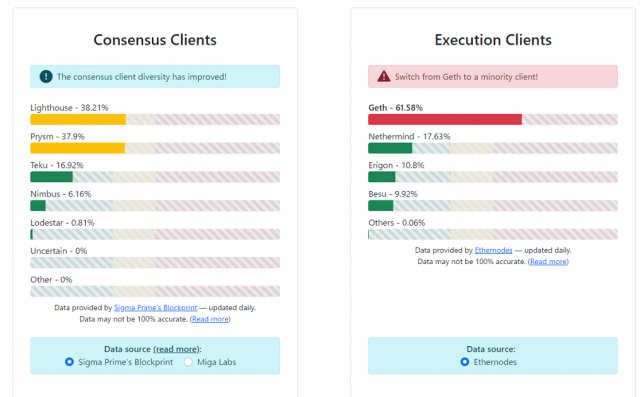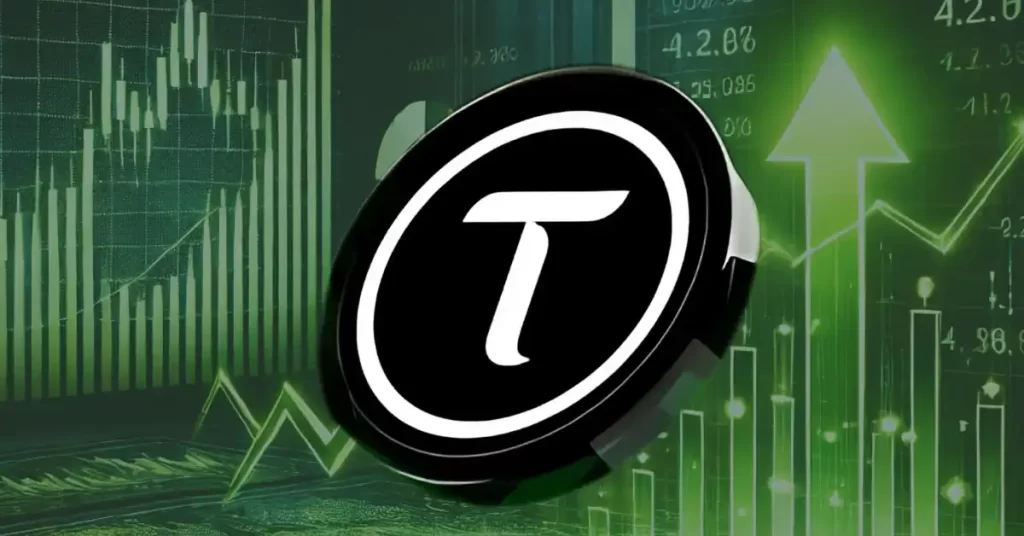
Finalizing the Consensus Building Layer
At the consensus layer of Ethereum (ETH), there was a temporary suspension or delay in finalization. This situation occurred around 3:00 (Japan time) on May 12, and recovered after about 30 minutes.
The beacon chain stopped finalizing about thirty minutes ago. I don’t know why yet, but in general the chain is designed to be resilient against this, transactions will continue as usual and finalization will kick in when the problem is resolved. pic.twitter.com/utAS0uAWpG
— superphiz.eth 

 (@superphiz) May 11, 2023
(@superphiz) May 11, 2023
The consensus formation layer stops finalizing when the proposed new block cannot be finalized. Finalization means that a block is recognized by the entire network and cannot be changed thereafter. Failure to do so increases the risk of double spending (double spending of the same coin) or splitting (forking) due to different transaction histories within the network.
Ethereum beaconchain consultant superphiz.eth tweeted that while it’s not clear why the consensus layer went out of order, the consensus layer is generally very resilient to such problems. Designed. In other words, even if a problem occurs, transactions can be executed as usual, and after the problem is resolved, block finalization will resume.
According to data provider Beaconcha.in, between epochs 200,552 and 200,554 of Ethereum, the number of Attestations dropped sharply. In Ethereum, 1 epoch is 6.4 minutes, so 3 epochs is 19.2 minutes. The fact that Attestations did not reach zero indicates the fact that the network as a whole was still functioning and that it continued to generate new blocks and process transactions, only delaying the finalization of certain blocks.
In fact, 25 minutes later, the mainnet reportedly resumed finalizing blocks. According to Prysmatic Labs co-founder Preston van Loon, to address the issue, some computer software (the client) was forced to work under a higher than normal load, allowing the Ethereum transaction history (the chain) to be read accurately. pointed out that it was possible to continue recording to
What is the Ethereum Consensus Layer?
Ethereum’s original Proof-of-Stake (PoS) blockchain, launched as Becoinchain in 2020. On September 15, 2022, it will “merge” with Ethereum’s Proof-of-Work (PoW) chain. It now functions as a “consensus layer” for Ethereum.
 Cryptocurrency Glossary
Cryptocurrency Glossary
connection:Ethereum Staking Reward Rate Rise, May Be Due to Meme Coin Boom Trading
Diversity of clients
Blockworks Research Senior Analyst Sam Martin believes that a temporary but significant drop in the participation rate of validators has resulted in a sharp decline in the number of attestations. is shown.
EthereumPools.info also tweeted that “Over several epochs, nearly all pools/operators we monitor have gone offline.”
 For a couple of epochs almost every pool/operator that we monitor went offline
For a couple of epochs almost every pool/operator that we monitor went offline 
Any idea what happened? pic.twitter.com/3Q9BDFis1d
— ethereumpools.info (@EthereumPools) May 11, 2023
Martin also opined that the variety of software (clients) available to verifiers prevented the problem from spreading widely and persisting for a long time.
While Ethereum blocks were temporarily unfinalized, the execution layer continued to validate blocks as normal. This was another example of the importance of client diversity within Ethereum’s set of validators.
In other words, because various types of software were used, even if a problem occurred in one part, other software maintained the functioning of the entire network and contributed to early recovery.
“Client diversity” refers to the types of software that can be used to validate Ethereum transactions. The use of various types of software increases the security and stability of the entire network.

According to Diversfy Now data, ‘Lighthouse’ and ‘Prysm’ are used almost equally (around 38%) among Ethereum transaction confirmation software (clients), followed by ‘Teku’ (16.9%). )’ is there. However, software such as ‘Nimbus’ and ‘Lodestar’ are not used much.
Superphiz has a problem of “loss of finality” like this one, unless one specific software (client) accounts for more than 33% of the total, i.e., if the usage of software is moderately distributed. said it most likely did not happen.
What is a validator?
A validator is a node that verifies the validity of data recorded on the blockchain. It has a role such as verifying transaction history, and if you fulfill that role, you will be rewarded with virtual currency.
 Cryptocurrency Glossary
Cryptocurrency Glossary
connection:To the long-awaited PoS, detailed explanation of Ethereum’s first large-scale upgrade “The Merge”
The post Ethereum delays block finalization by about 30 minutes appeared first on Our Bitcoin News.

 2 years ago
134
2 years ago
134














 English (US) ·
English (US) ·